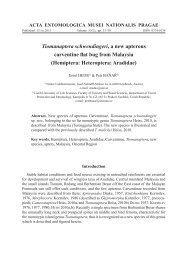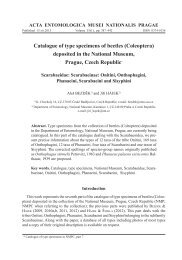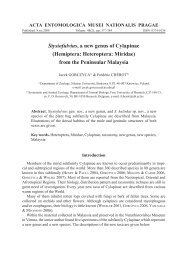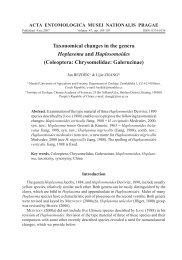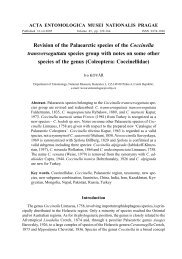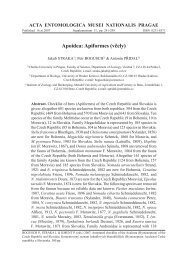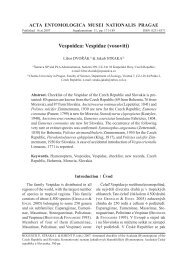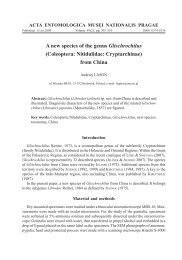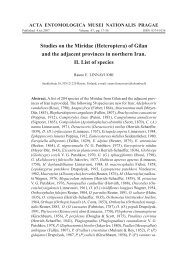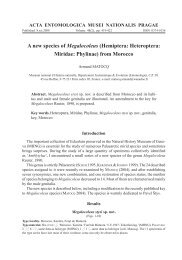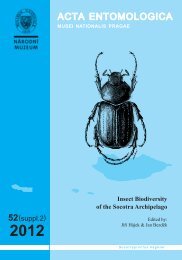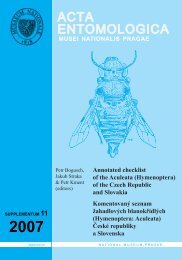ACTA ENTOMOLOGICA MUSEI NATIONALIS PRAGAE
ACTA ENTOMOLOGICA MUSEI NATIONALIS PRAGAE
ACTA ENTOMOLOGICA MUSEI NATIONALIS PRAGAE
Create successful ePaper yourself
Turn your PDF publications into a flip-book with our unique Google optimized e-Paper software.
426<br />
Fig. 1. Map of Iran with boundaries of provinces.<br />
GHAHARI et al.: Annotated catalogue of the Iranian Alydidae<br />
Most species of the Alydidae are characterized by their elongate and slender form and<br />
often elongate appendages. They are often dull grey-brown in color. Some species mimic<br />
ants (particularly the larvae) or wasps. The head width is greater than half the width of the<br />
posterior margin of the pronotum. The bucculae never exceed the antenniferous tubercles.<br />
The antennae are inserted dorsal to the midline of the eye. The metathoracic scent glands<br />
have a single small sac, and their external scent efferent system has a distinct peritreme. The<br />
membrane of the hemelytra has numerous veins. The abdominal trichobothria are lateral<br />
and sublateral on sterna V-VII and submedial on sterna III and IV. The male and female<br />
genitalia are diagnostic (AHMAD & SOUTHWOOD 1964, SCHAEFER 1975, MCIVER & STONEDAHL<br />
1993, SCHUH & SLATER 1995).<br />
The alydids were first recognized as a family by AMYOT & SERVILLE (1843), a ranking that<br />
has been followed by most subsequent authors (e.g., SCHAEFER 1965, SLATER 1982, SCHUH &<br />
SLATER 1995). STÅL (1867) regarded them as a subfamily of the Coreidae; however, despite<br />
their close relationship, this classification has had little modern usage. SCHAEFER (1965)<br />
identified two subfamilies, the Alydinae and Micrelytrinae, with the latter divided into two<br />
tribes (Micrelytrini and Leptocorisini). AHMAD (1965) raised the Leptocorisini to a subfami-



